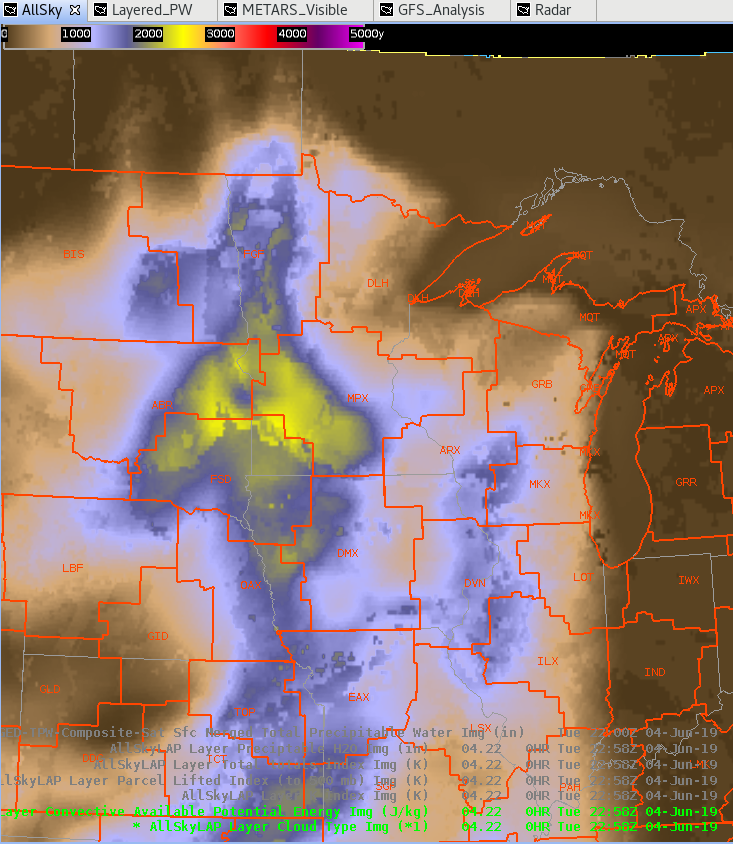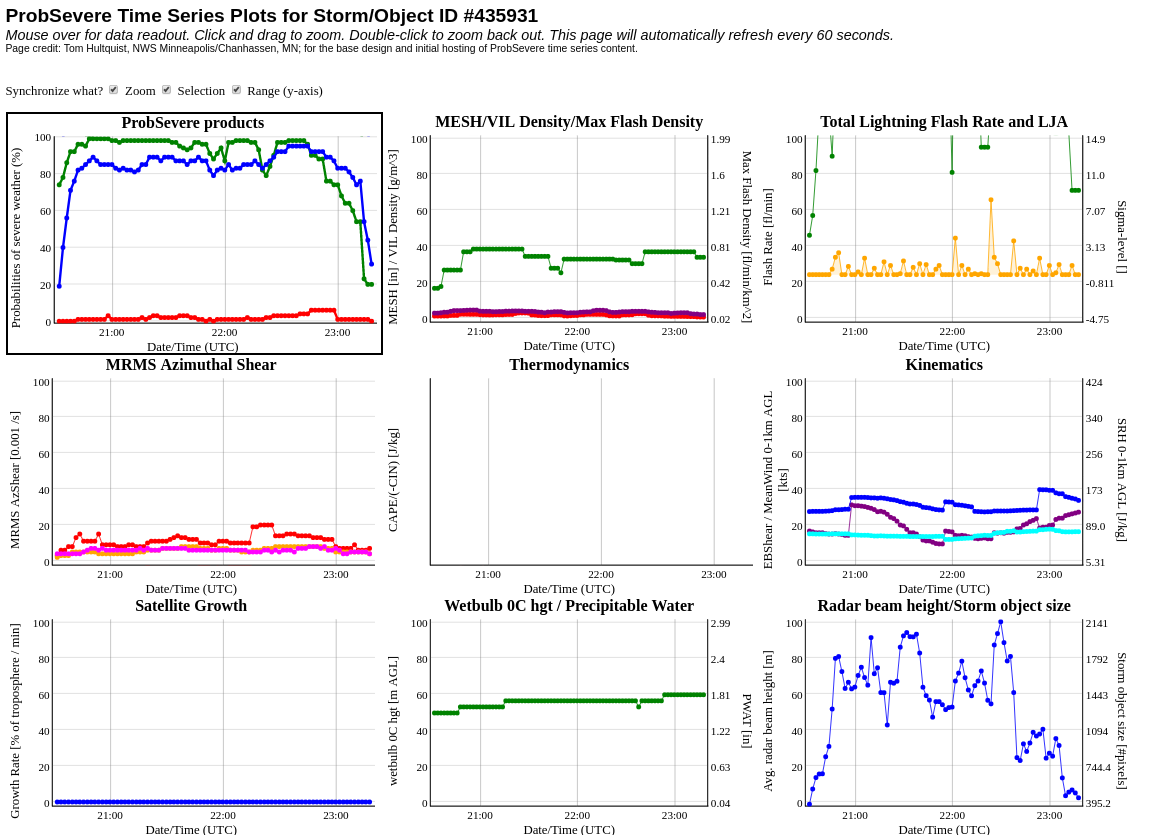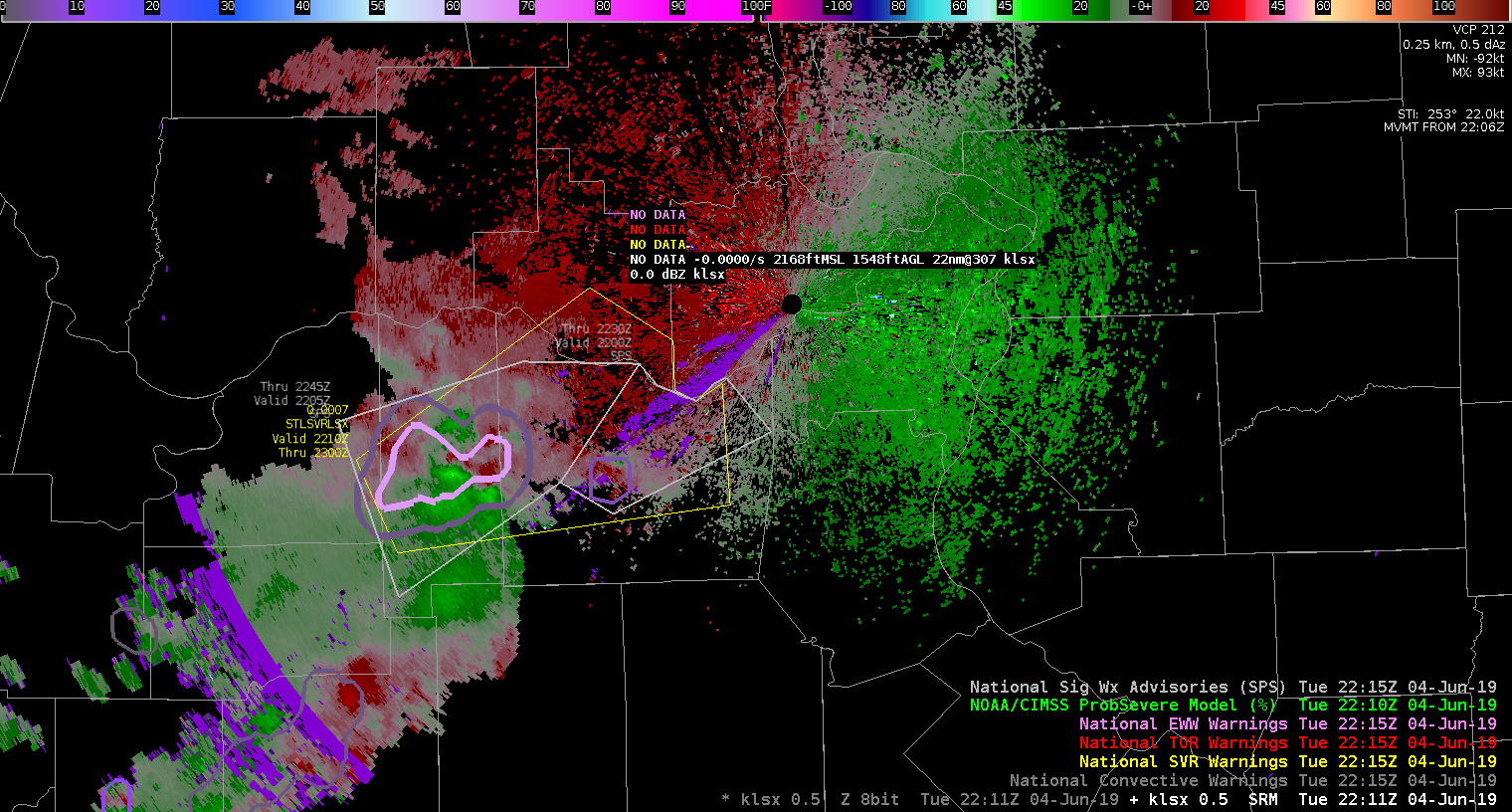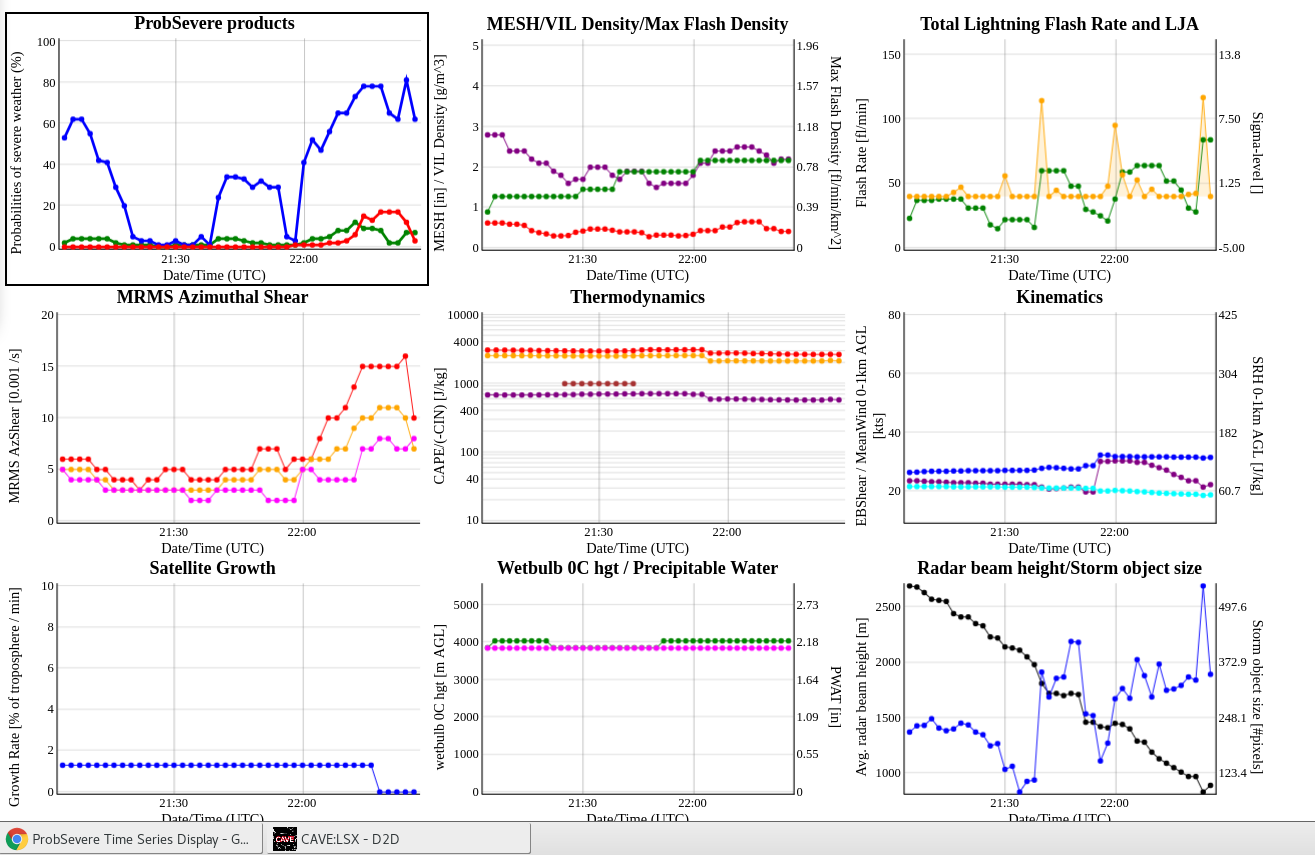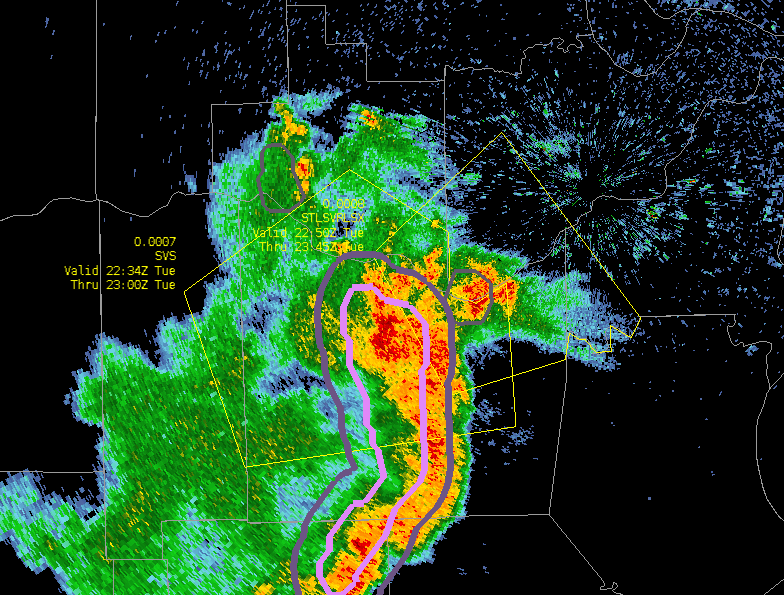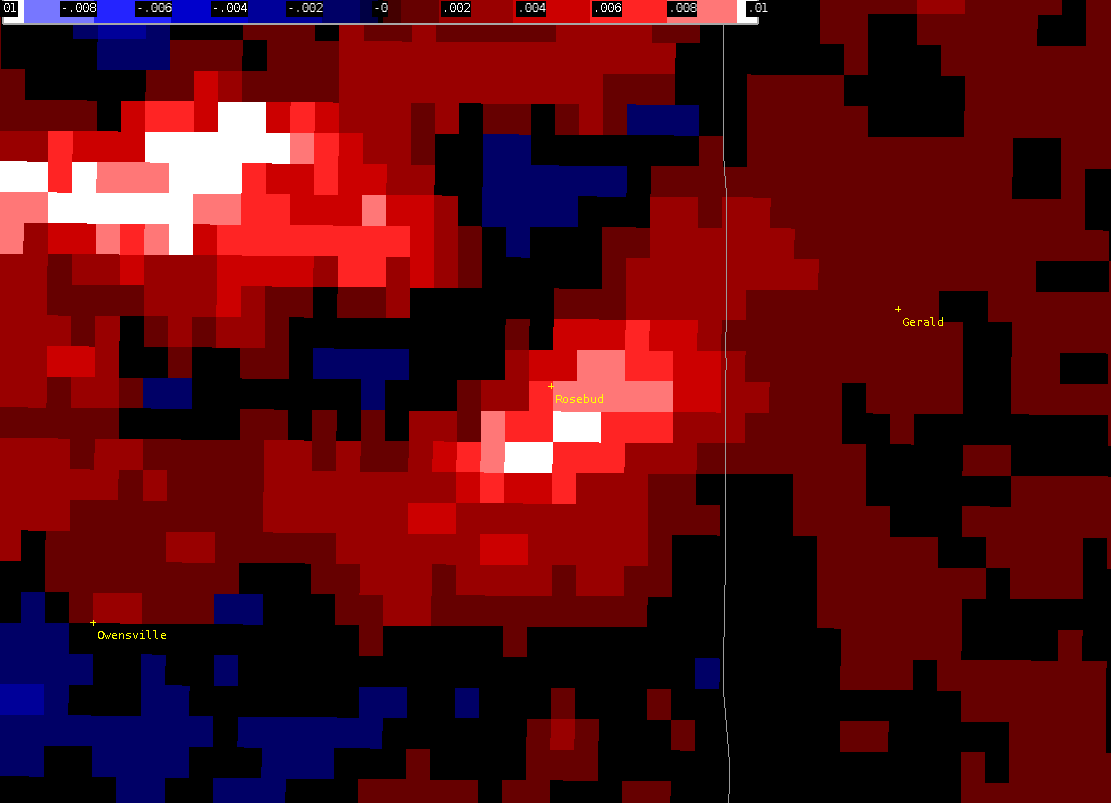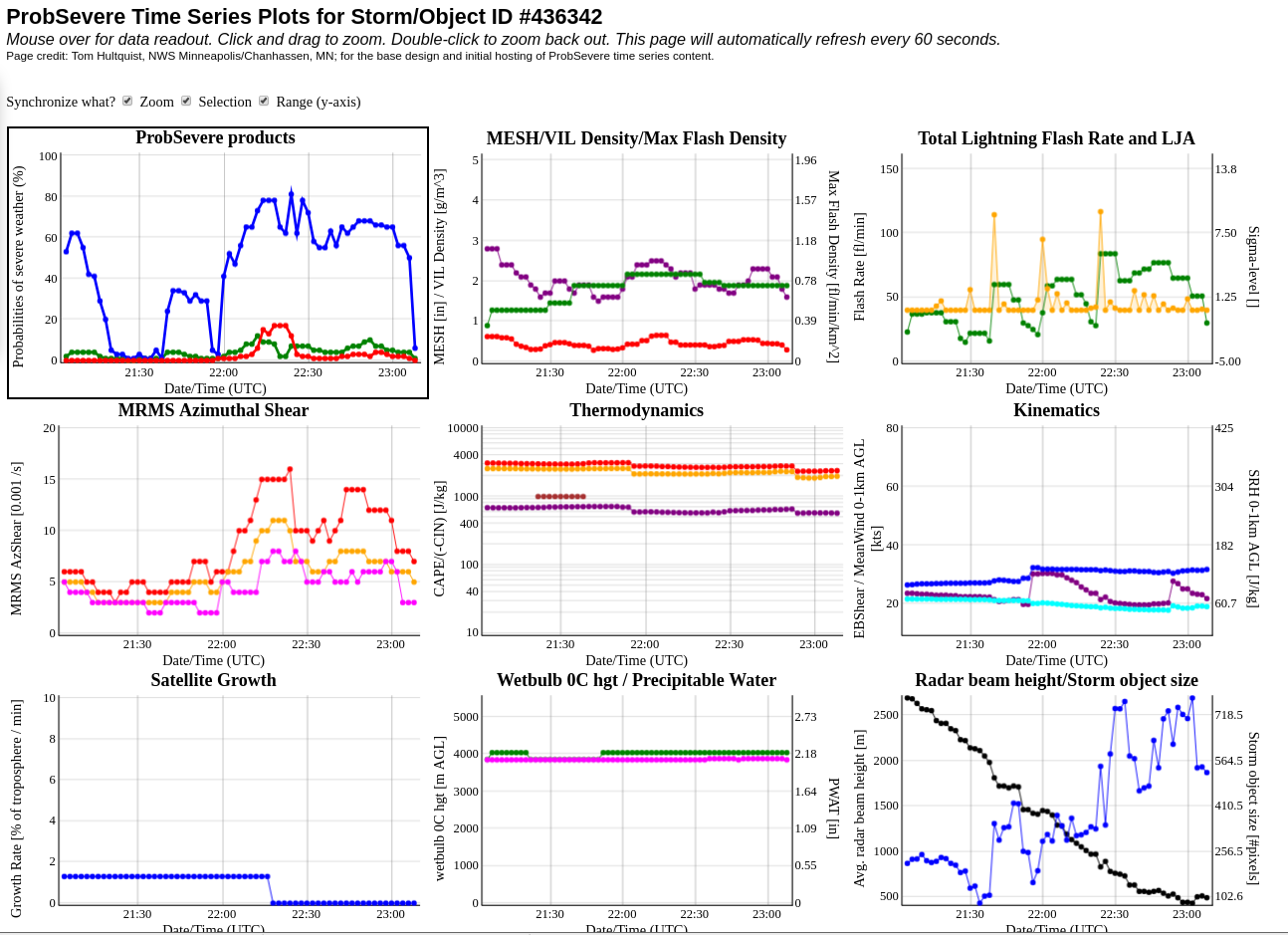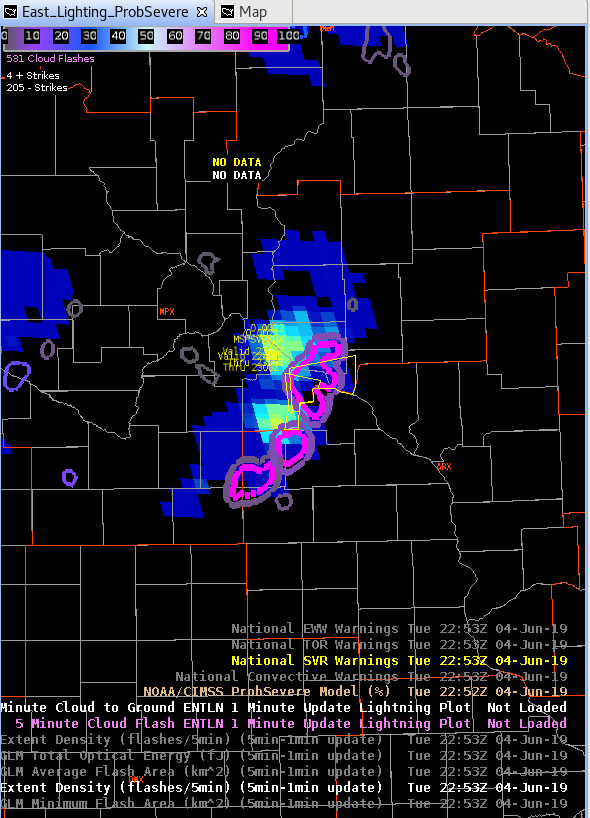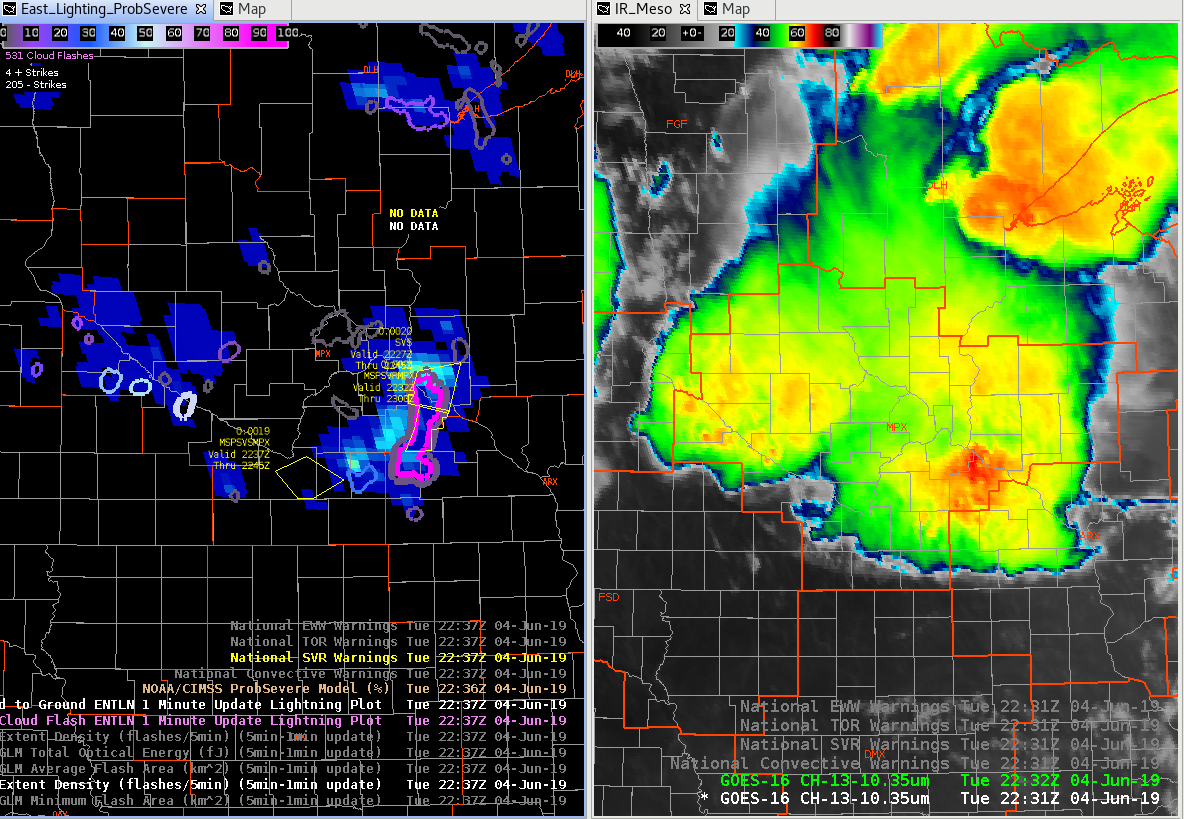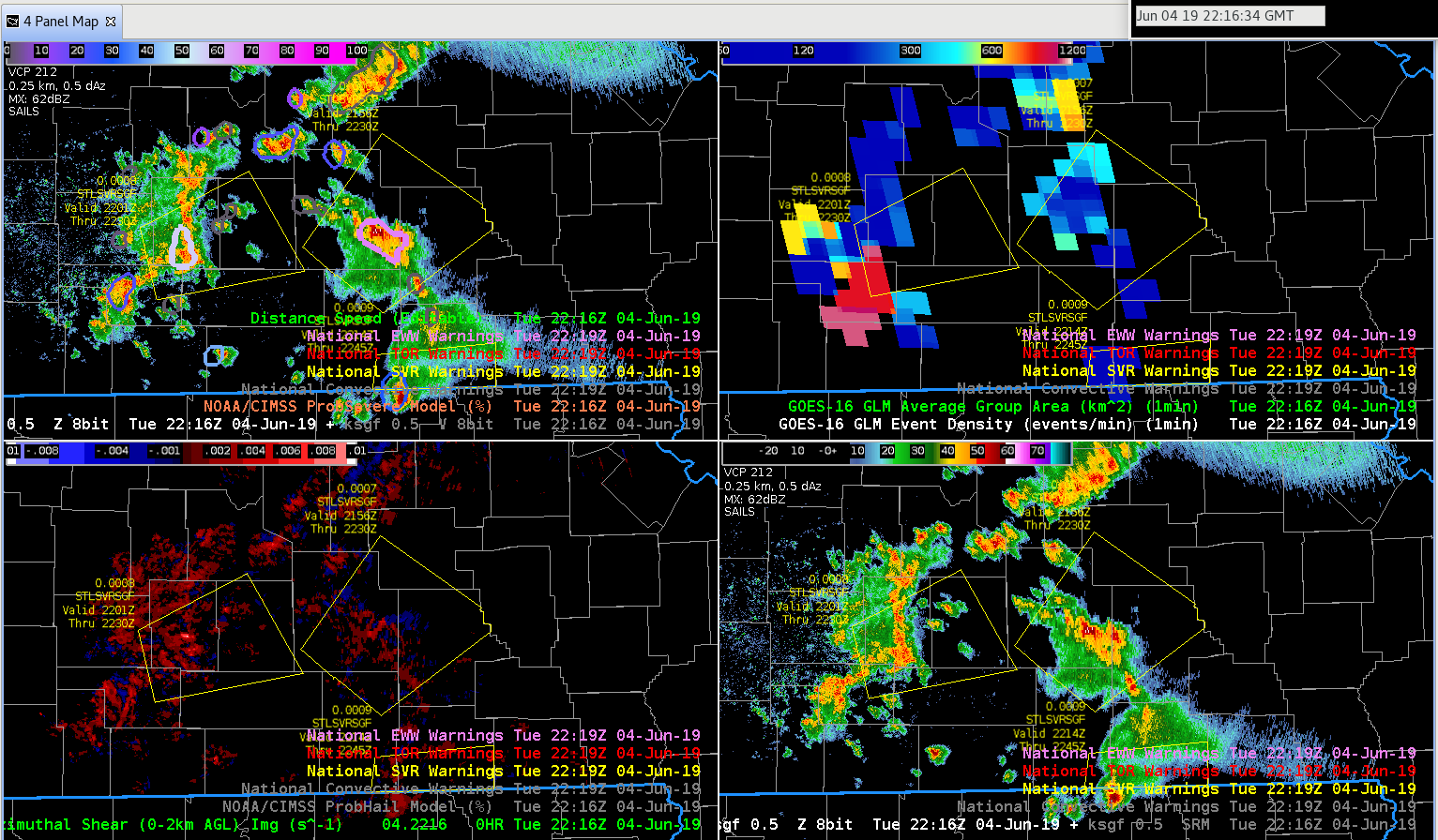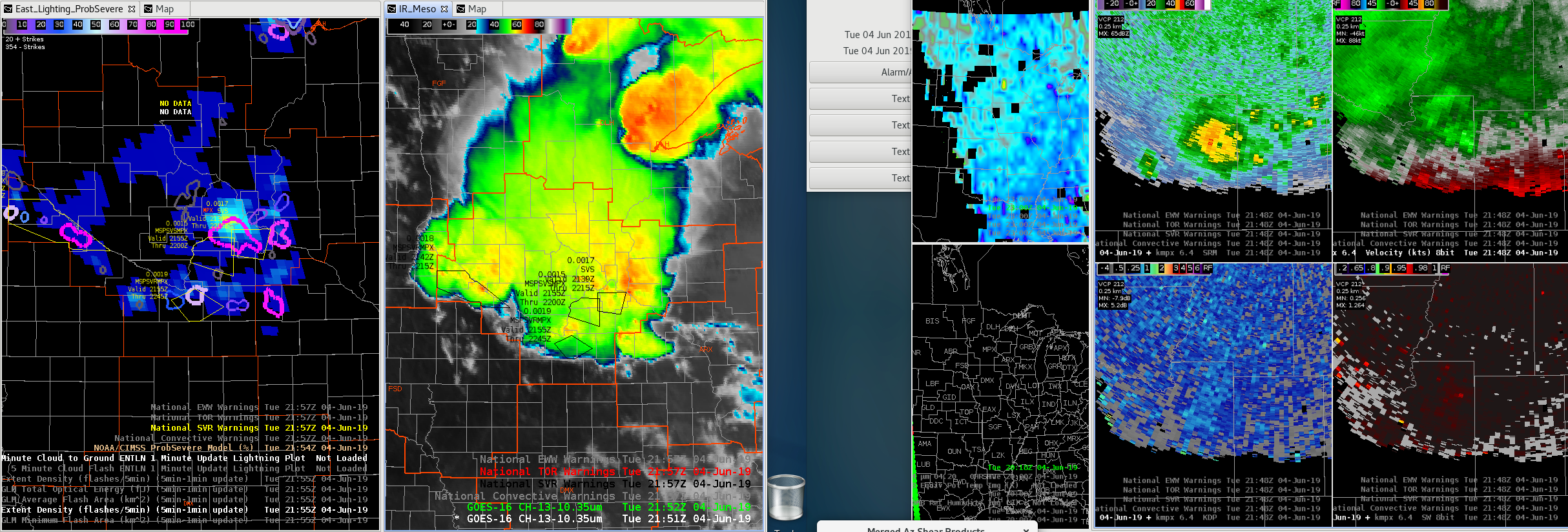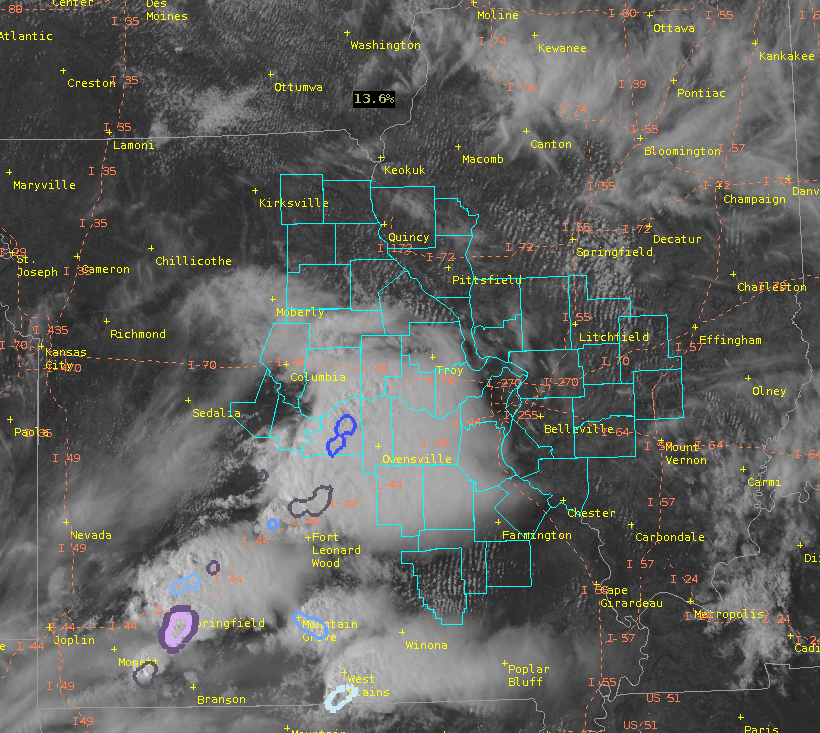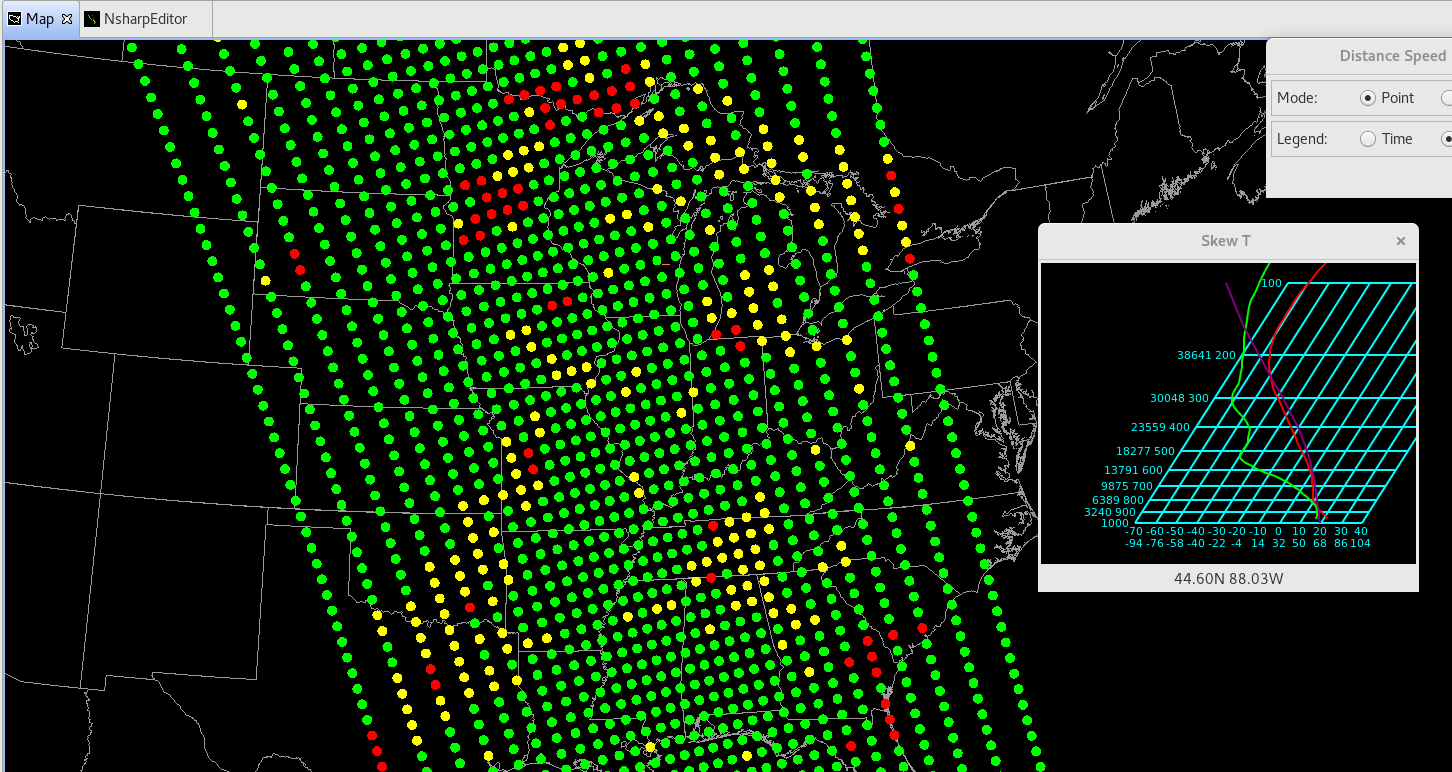We’re currently analyzing storms developing in the Springfield Missouri WFO. Right now I’m using various tools to monitor if these storms will become severe.
Right now I’m using a combination of radar, GLM, nucaps, and the All sky products. Currently the most helpful tools on top of what I normally use are allsky and the lightning products.
The allsky cape helped to find CAPE gradients and an increase in CAPE. The northern batch of storms were pushing into an area of increasing CAPE and in return they did intensify.
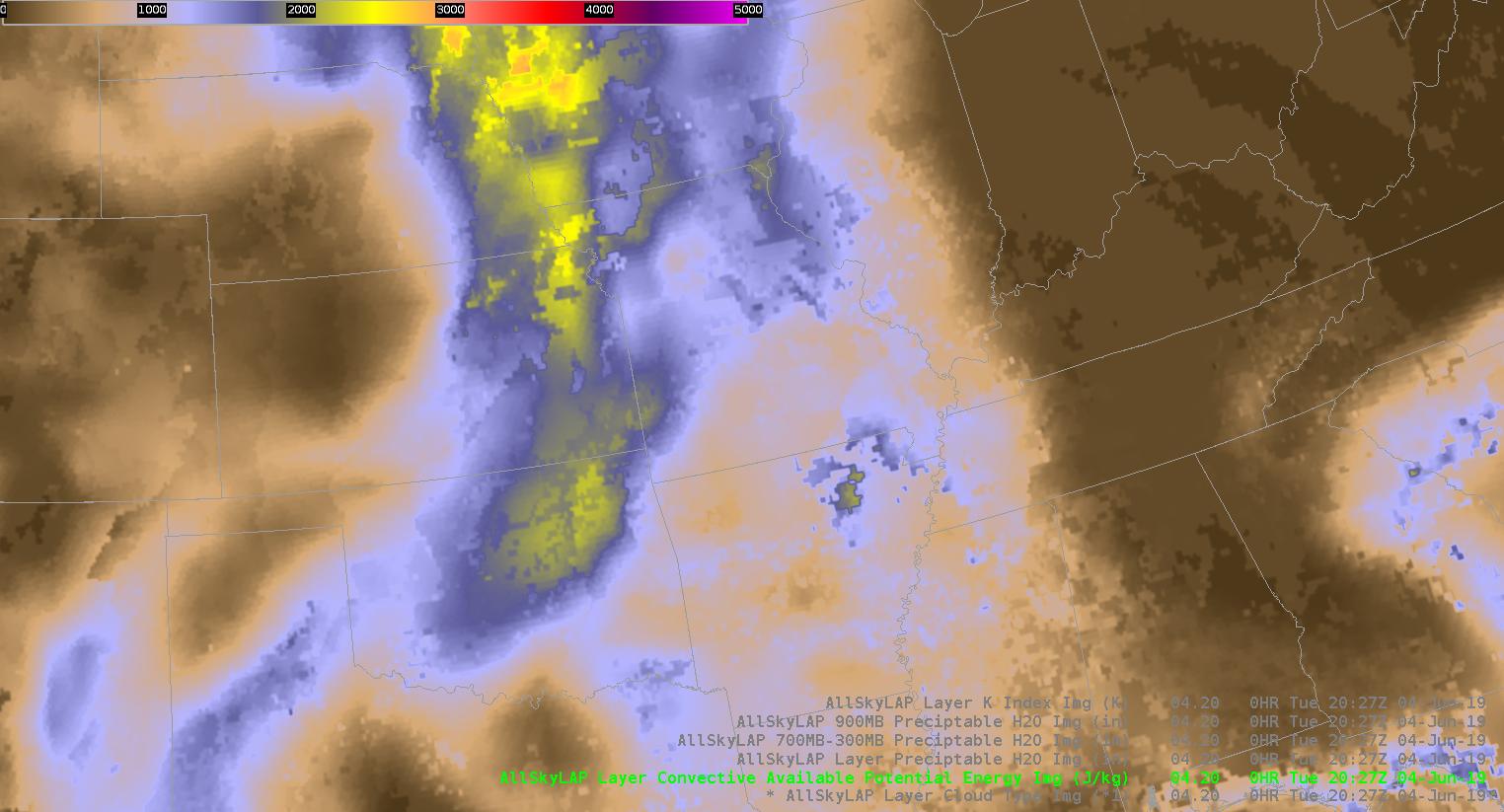
While deciding whether or not to issue a warning I also looked at AFA GLM data to see if there were new flashes developing which can be indicative of growing convection. That flashes aligned with radar and increased my confidence that storms would intensify.
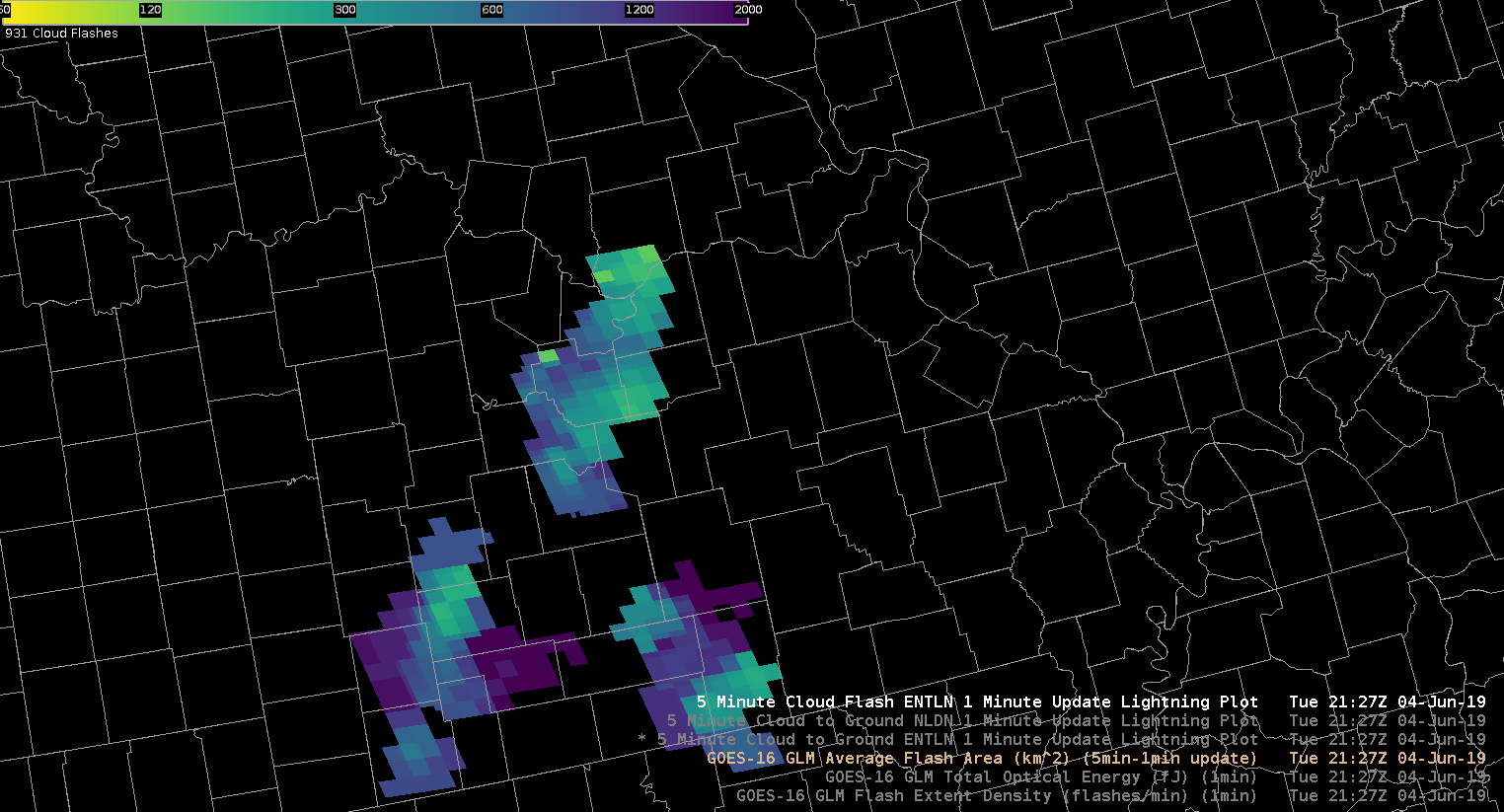
That lead to me issuing a severe thunderstorm warning. The prob severe data also ramped up. So I felt confident about my warning.
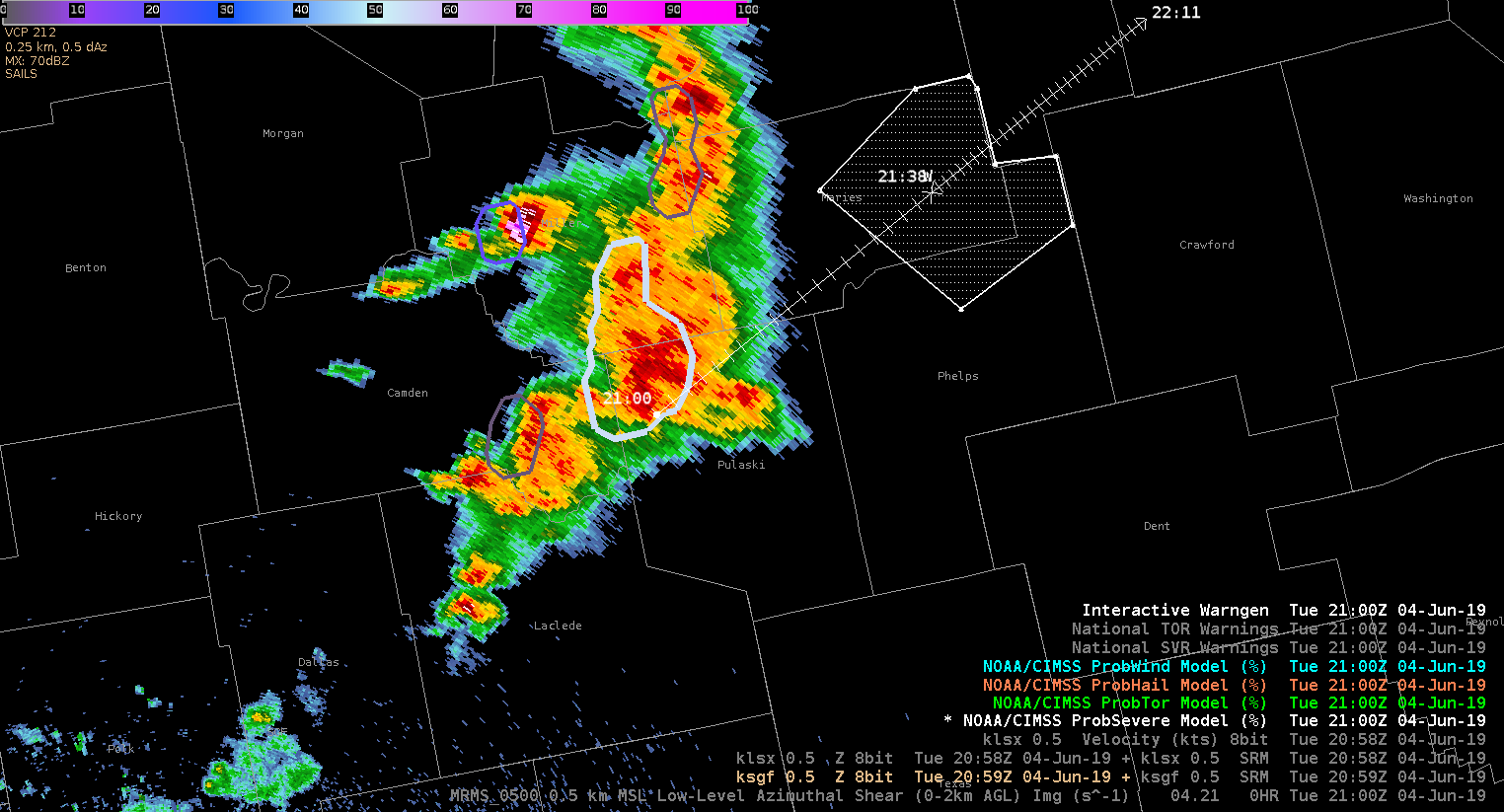
I also used NUCAPS sounding predictor to look at the cape during the rest of the afternoon.
While watching storms in the Springfield area I tried using NMDA. Even after magnifying the product it was still a bit hard to see. I’m note sure if there’s a way to make the circle bigger or more pronounced. It can get busy on an active day.

As I continue to track storms I’m using Allsky CAPE to see what type of environment they are moving into. The CAPE does increase farther east so that makes me anticipate convection wane over the next few hours. I will though pay close attention to the storm farther north since they will move along the cape gradient.
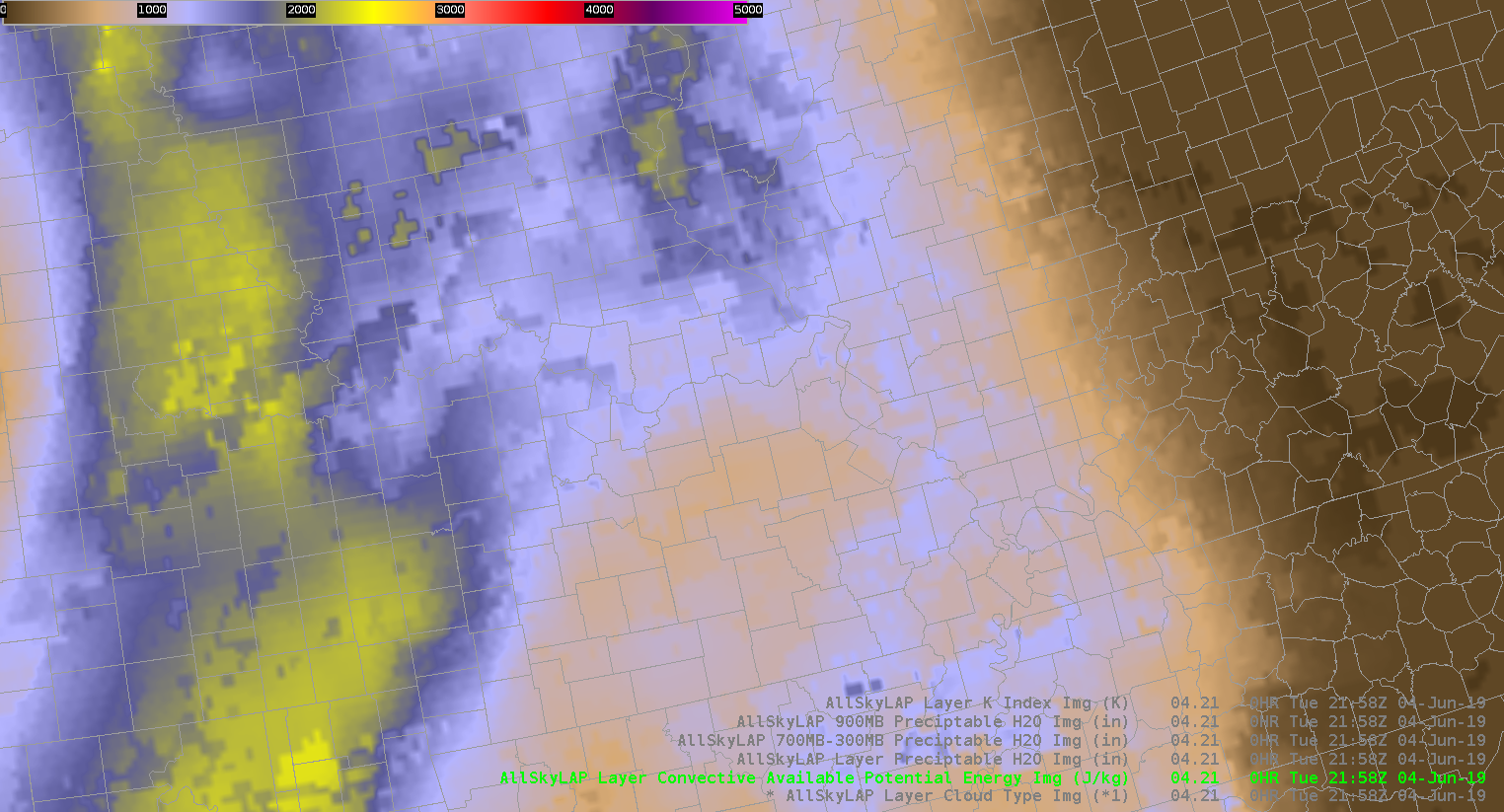
I also used probsevere to increase my confidence in warning for a cell in pulaski county. The velocity ramped up as well as vil values. 
The increase in probsevere over a few scans prompted me to issue a severe thunderstorm warning.
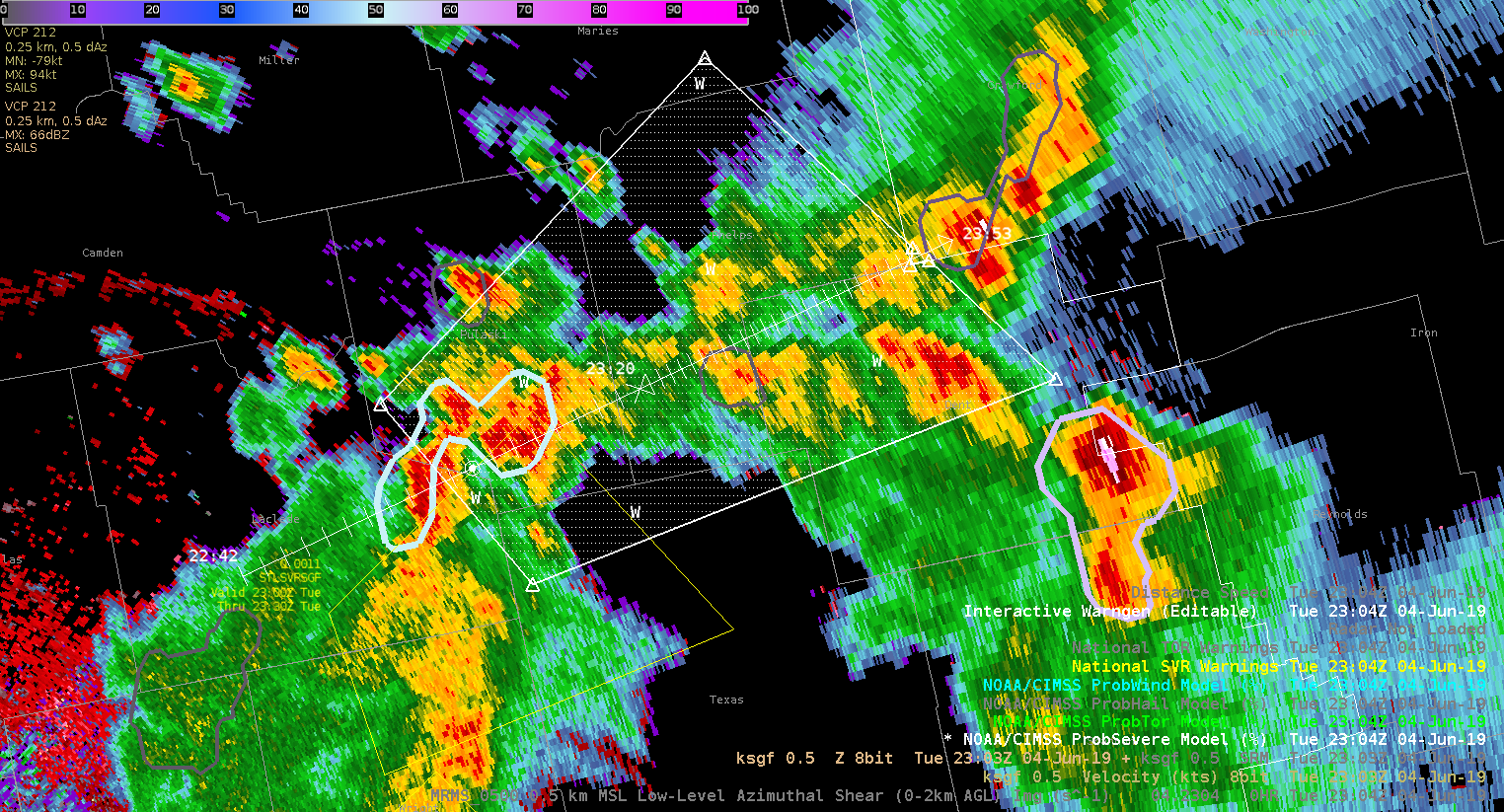
Taylor Johnson
